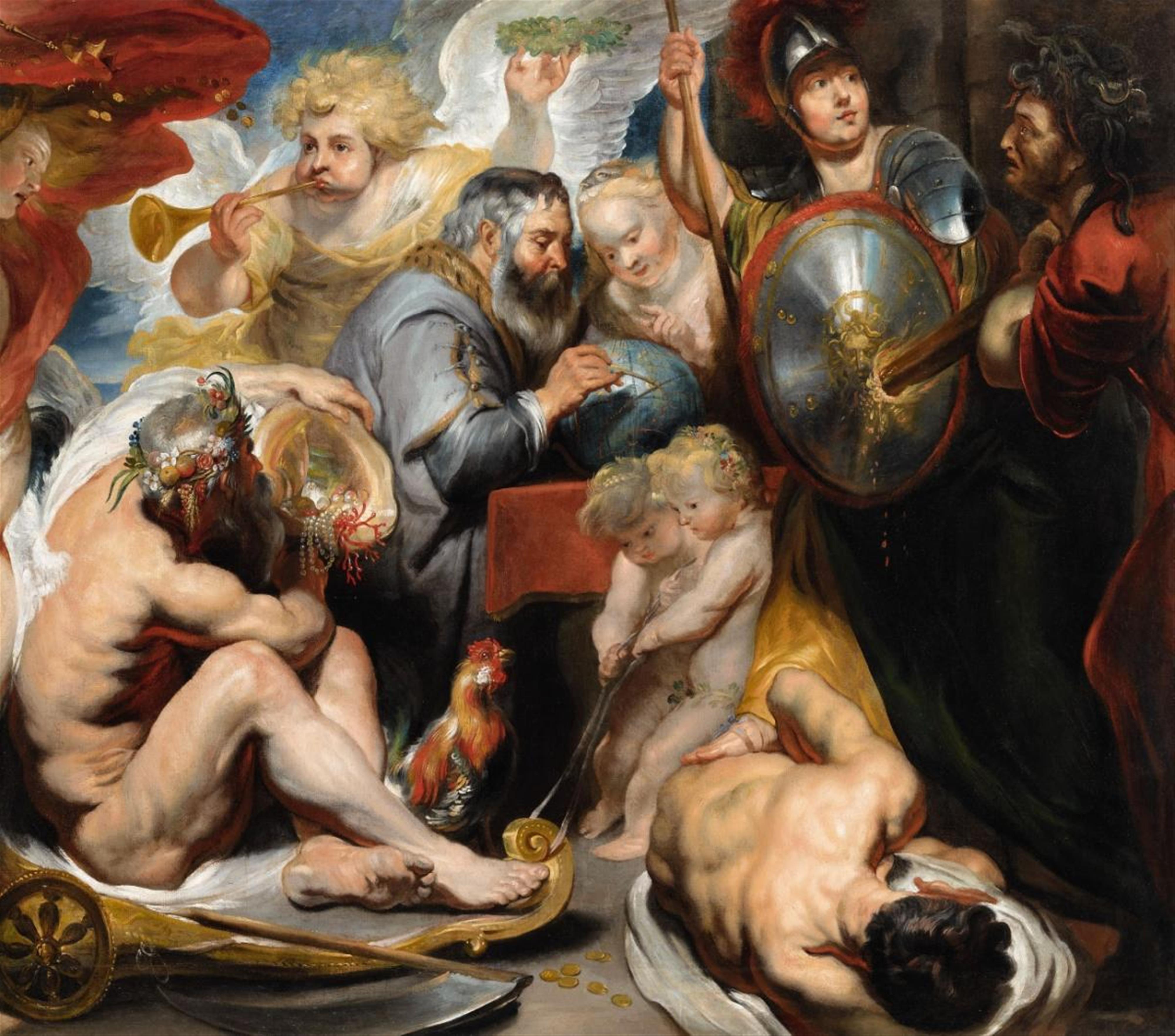Jacob Jordaens, attributed to
Allegory of the Sciences: Minerva and Chronos Protecting the Sciences against Envy and Ignorance
Oil on canvas (relined). 98 x 112 cm.
The hitherto unknown „Allegory of the Sciences“ by Jacob Jordaens is a second version by the artist of a painting in the Statens Museum for Kunst, Copenhagen (117 x 164 cm). The slightly larger Copenhagen painting, originally painted on panel and later transferred to canvas, has been reduced at the upper edge by 18 cm. The missing part of the Copenhagen painting is still visible on the present picture whereas this painting has been reduced by 13 cm on the left hand side so that the figure of Venus is only partly visible. Like the Copenhagen painting, the present picture can be dated to 1615 according to its brushwork, composition, and palette. Jacob Jordaens opened his own workshop in Antwerp in 1615 and at that time did not have any assistants or pupils.
The present work displays an unusual iconographic programme centered around the glorification of the sciences, personified by the bearded old man in the center of the work. He is the only figure clothed in contemporary 17th century costume, and is surrounded by mythological, mainly nude, figures. The man is shown poring over a globe, and it has been proposed that the figure represents the famous cartographer Gerard Mercator (exhib. cat. Brüssel und Kassel, l.b.). To his side we see a young woman dressed in an animal pelt, who is assumed to be an allegory of geometry. In contrast, the group to the right side of the painting is easier to interpret: We see the Athena, the goddess of wisdom, battling a figure representing envy - recognisable by her hair of snakes - above the already felled allegory of ignorance. A nude male figure is shown seated in a low chariot being pulled by two putti and holding a cornucopia filled with pearls and coral. In the past he was interpreted as Neptune, but is now considered to be Chronos. Above the bearded man we see the figure of Pheme announcing the glory of knowledge through the trumpet of fame. To the left edge of the painting we see the head of Fortuna who is shown scattering gold and coins in the direction of the scholar. Jordaen's inspiration for the complex iconography of this piece presumably came from his Flemish contemporaries Rubens and Abraham Janssens. We would like to thank the curators of the exhibition "Jordaens and the Antiquity" (Brussels and Kassel 2012) for scientific advice.
Literature
Cf. exhib. cat.: „Jordaens und die Antike“, Musées royaux des Beaux-Arts de Belgique, Brüssel und Museumslandschaft Hessen Kassel, Kassel 2012/13, p. 80f, no. 28.

